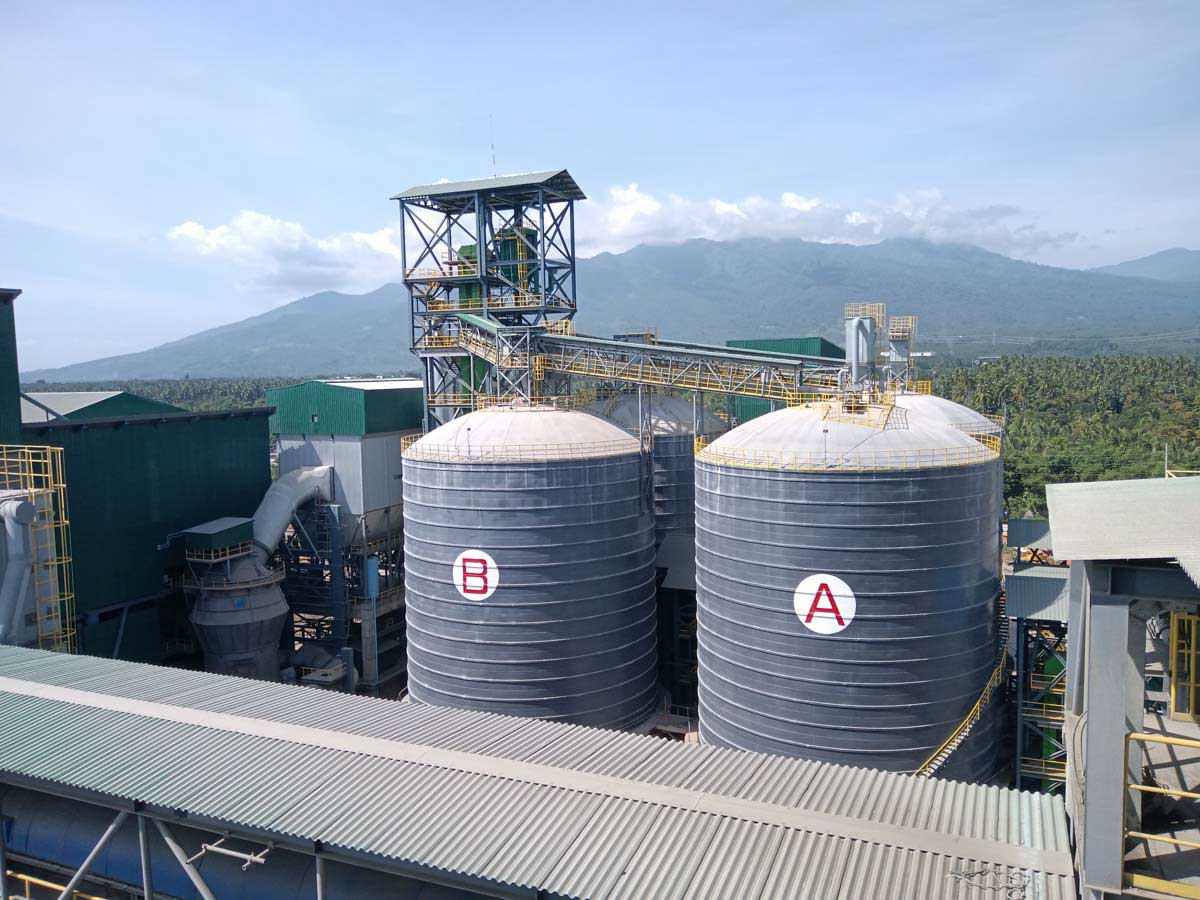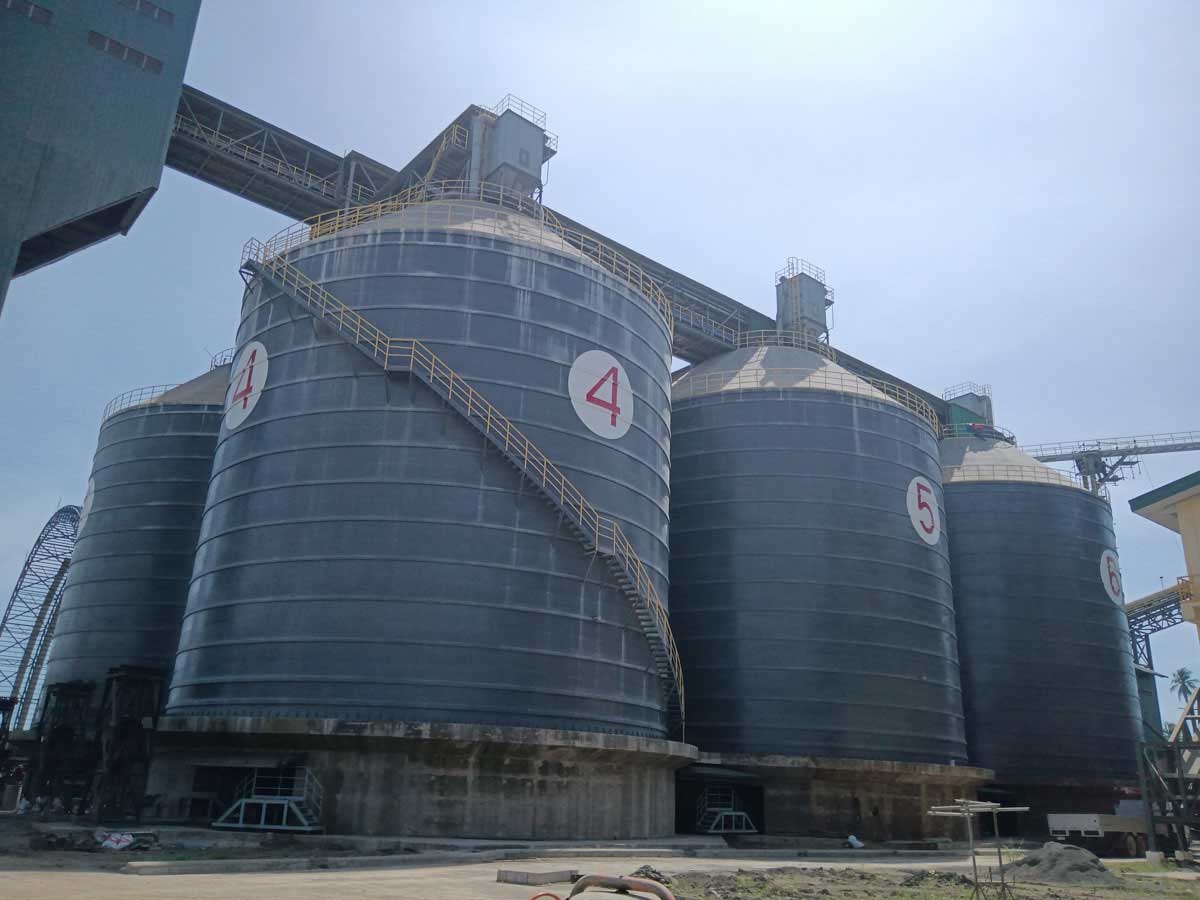In the modern material storage sector, silos, as key storage facilities, are widely used in industries such as grain, building materials, chemicals, metallurgy, and electricity. With the advancement of industrialization and scale, different types of silos have demonstrated their respective advantages and limitations in performance and application. Currently, large-capacity material storage silos (with single bin capacities exceeding 10,000 tons) on the market primarily include welded steel silos and reinforced concrete silos. When selecting a silo, companies often need to comprehensively consider factors such as cost, construction cycle, maintenance, and service life. Below, we will conduct a comparative analysis based on construction characteristics and economic efficiency.
Construction Characteristics Comparison
1. Foundation Requirements
Welded Steel Silos: Constructed from high-strength steel plates, with thin wall panels, the overall silo is lighter than concrete silos, requiring less foundation bearing capacity and resulting in lower foundation construction costs.
Concrete Silos: Constructed from cast materials such as steel bars, cement, and sand and gravel, these structures are heavy and must rely on a solid foundation for support. Consequently, they place higher demands on foundation construction and increase the overall construction cost.
2. Structural System
Welded Steel Silos: The silo's rigid frame is formed by multiple ring and vertical reinforcements. The welded structure provides strong load-bearing capacity and excellent stability. The construction method is simple, the operation process is mature, and quality control during construction is easy.
Concrete Silos: Slipform construction is typically used, requiring formwork erection and concrete pouring. The entire construction process is complex, requiring high technical and personnel requirements, resulting in a long construction period and high construction costs.
3. Construction Period
Welded Steel Silos: Due to their simple structure and rapid construction, their construction period is only 1/4-1/3 that of concrete silos of the same capacity. This means earlier commissioning, helping companies realize economic benefits more quickly.
Concrete silos: The construction process is complex, and the concrete requires a long curing time, resulting in a significantly longer overall construction period than steel silos.
4. Sealing, Leakage, and Moisture Resistance
Welded steel silos: The wall panels are fully welded, providing excellent sealing, effectively preventing moisture and leakage, making them suitable for materials with demanding storage environments.
Concrete silos: While thick walls offer excellent insulation and heat retention, concrete itself has limited water resistance and slightly inferior moisture resistance, requiring additional anti-seepage measures.
5. Supporting Facilities and Modification Options
Welded steel silos: The silo structure is flexible, and components are removable and replaceable, making subsequent modifications and upgrades relatively easy. They can accommodate the installation of modern automation, ventilation, and temperature control systems.
Concrete silos: Due to their fixed structure, subsequent modifications and expansions are difficult once built, resulting in poor adaptability.
Economic Performance Comparison
1. Construction Cost
From the perspective of initial investment:
Welded steel silos: Fast construction, short construction period, and significant savings in labor and material costs. Steel usage is comparable to that of concrete silos, but cement usage can be reduced by over two-thirds. Statistics from most regions show that the initial investment for concrete silos is 15%-40% higher than for steel silos.
Concrete silos: Large initial investment, long construction period, and slow capital recovery.
2. Operation and Maintenance
Welded steel silos: While low in construction cost, they require regular maintenance and anti-corrosion coating over the long term. Their design lifespan is generally around 25 years.
Concrete silos: The material is inherently stable, the structure is sturdy, and maintenance is minimal, allowing for a lifespan of over 50 years. However, cracks or leaks can be difficult and costly to repair.
Comprehensive Comparison and Selection Recommendations
By comparing construction characteristics and economic performance, the following conclusions can be drawn:
Welded steel silos are suitable for businesses requiring fast construction, relatively limited capital investment, and a high degree of flexibility in storage system upgrades. Examples include cement and fly ash storage facilities, temporary material storage areas, and industrial projects requiring rapid commissioning.
Concrete silos are more suitable for businesses with long-term operations, high service life requirements, and strong financial resources. Examples include large power plants, chemical plants, mines, and national grain depots, which require decades of stable operation.
In other words, steel silos emphasize "speed, cost-effectiveness, and flexibility," while concrete silos represent "stability, durability, and reliability."
| Comparison Dimension |
Welded steel silo |
Concrete silo |
| Basic Requirements |
Light weight, low requirements on foundation bearing capacity, low foundation construction cost |
The structure is heavy, the foundation requirements are high, and the foundation construction cost is high |
| Structural system |
Steel plate welding + ring reinforcement and vertical reinforcement, strong bearing capacity and easy construction |
Slipform construction technology has complex procedures and long cycles |
| Construction period |
The construction period is short, only 1/4-1/3 of that of concrete siloC |
The construction period is long and the concrete solidification takes a long time |
| Sealing and moisture-proof performance |
Full welding process, good sealing, moisture-proof and leak-proof performance |
Good thermal insulation, but poor moisture resistance, requiring additional anti-seepage measures |
| Supporting facilities and renovation |
Flexible structure, detachable and replaceable, easy to transform and install automation system |
The structure is fixed and difficult to modify and expand after construction |
| Construction costs |
Low initial investment, short construction period, saving labor and material costs |
The initial investment is high, 15%-40% higher than that of steel silos, the construction period is long, and the capital recovery is slow. |
| Operation and maintenance |
Regular maintenance and anti-corrosion treatment are required, and the design life is about 25 years |
Maintenance frequency is low, but crack repair is difficult and costly |
| Service life |
About 25 years |
More than 50 years |
| Applicable Scenarios |
Suitable for projects that require rapid construction, limited funds, and flexible upgrades (such as cement, fly ash storage, and temporary storage) |
Suitable for projects with long-term operation, high life requirements, and strong financial strength (such as power plants, chemical plants, mines, and national grain depots) |
In material storage projects, there's no perfect solution; only the one that best suits the project's needs. Welded steel silos are increasingly popular in modern industrial storage due to their rapid construction, low foundation costs, and ease of renovation. Concrete silos, however, remain a reliable choice for large enterprises seeking long-term stability due to their durability. Therefore, when selecting a silo, companies should consider a comprehensive range of factors, including material properties, investment budget, service life requirements, and future expansion potential, to find the optimal solution.

.jpg)

